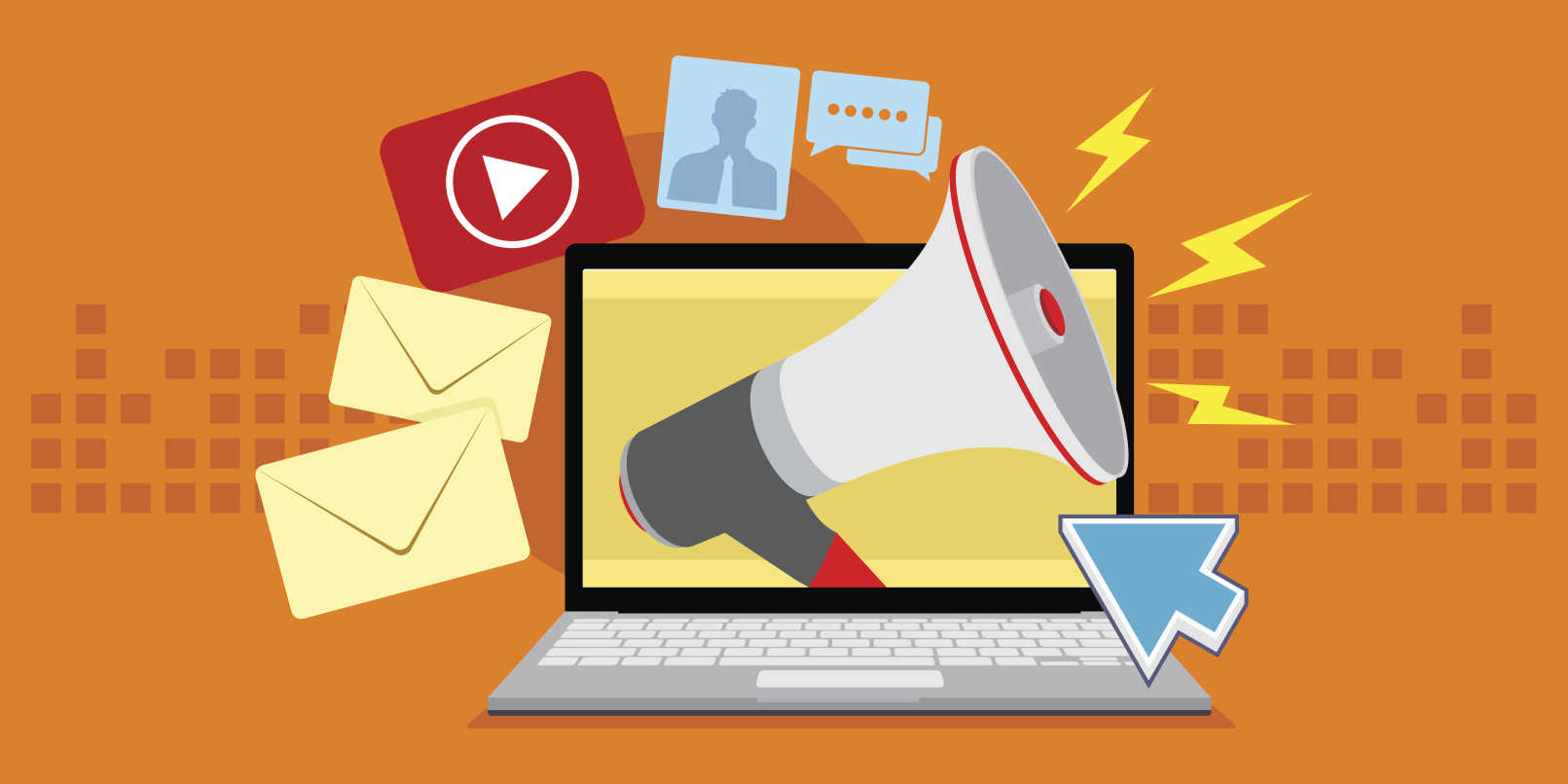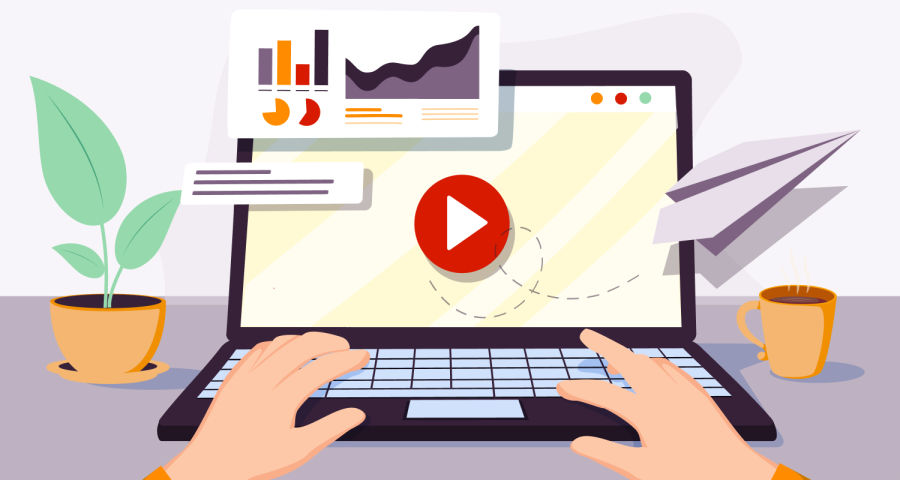//
May 16, 2022
Push or Pull? Inbound vs. Outbound Lead Generation
Before the digital age, one lead generation method was tried and true: outbound marketing or push marketing: billboards, ads, commercials, mailings, and even door-to-door sales.
But there is no death of the traditional salesman regarding lead generation; it just looks different. At its center, the goal of marketing will always remain the same: to connect consumers (qualified leads) with the solutions they need.
So, new lead generation strategies like Inbound marketing have emerged with the increasing digital marketing landscape. In B2B marketing, businesses need to remember to employ both Inbound and outbound marketing strategies. So, what’s the difference between Inbound and Outbound lead generation strategies, and how do you use both? So glad you asked!
Onwards!
What is lead generation?
First, you need to know what lead generation is.
Lead generation is inviting potential customers (leads) to your business, resulting in conversions and closed deals as part of the sales process.
How do you generate leads?
As discussed before, there are a variety of tactics marketing teams use to generate leads like Cold calling, mailers, blog posts, , events, paid digital or print ads, email newsletters, and so on.
These tactics could work or not, depending on your strategy and target audience. Still, Inbound marketing strategies in conjunction with outbound will increase success in your goals and marketing efforts.
Push or Pull?

In short, you can push leads to your company with outbound marketing tactics or them towards you with Inbound marketing strategies. Both are meant to generate leads. They are also more effective when you understand who your leads are, why they would use your product or service, and how you should speak to those leads to generate the most interest. You can use Inbound and Outbound strategies in conjunction, but it's essential to know how to keep it balanced to keep from putting all your eggs in one marketing basket.
What is Inbound marketing?

Have you ever searched for a solution to your problem and found answers in the form of educational or ads that seemed to speak directly to you and pertained precisely to the issue you had? Maybe you subscribed to an simply because you could relate to the content marketing from a company’s social media. These are all examples of Inbound marketing. You, the consumer, had a problem, looking for a solution. You had the opportunity to educate yourself about the company that you felt could best solve your problem. You found them at the right time at the right place, or, because of strategic and informed marketing strategy on behalf of the company, it found you at the right place at the right time.
Either way, at the center of Inbound marketing, is a flywheel in which multiple marketing efforts can work simultaneously to educate, nurture and engage with customers at all stages of the buyer’s journey.
You can't have inbound marketing without a powerful CRM to back it up!
Not 100% on what a CRM can do for your business? Watermark is offering free self-serve training videos to guide you on how a CRM can enhance your sales and marketing teams.
At what stage should you use inbound marketing to generate leads in the buyer's journey?
Inbound marketing is agile and customizable with its ability to be implemented at every part of the to qualify leads.

What is outbound marketing?

Pardon the interruption!
Have you ever been perusing online and you start seeing an ad come out of nowhere you didn’t search for it and you didn’t ask for it, but there it is, interrupting your train of thought? A better example is one we’re all familiar with; television commercials and radio ads. This is Outbound marketing, also referred to as ‘push’ marketing.
Outbound marketing uses tactics that get a message to a large population of people in one shot, relatively non-targeted and randomized, in an effort to pique enough interest by the few it will reach at the right time and place to make a sale.
As opposed to inbound marketing, outbound tactics are pushing messages and products to the masses giving them reasons they should buy their products or services.
Sure, we’ve all been annoyed by obnoxious ads, but we’ve also converted if we’ve clicked or called because we were convinced we needed that product or service.
Outbound tactics work…if you know how to use them wisely and in conjunction with a larger, more robust marketing strategy like Inbound.
At what stage should you use outbound marketing in the buyer's journey?

The Awareness Stage is the stage in which outbound marketing can work best.
Now that we’ve established what Inbound and Outbound marketing is and when to use them, let’s talk about how each generates leads.
What is Inbound Lead Generation?
Inbound lead generation pulls leads to your website via omnichannel marketing efforts. Prospects are encouraged to engage with your company and reach out to you for more information, request a quote or demonstration, or make a purchase.
Inbound Lead Generation: How it’s done
With Inbound lead generation, prospects decide when and where they will interact with your brand and sales reps.
Standard Inbound methods are:
- Consistent and tailored content marketing using educational and , audio, and written content.
- (SEO) informs your marketing efforts and customization towards specific target audiences and buyer personas.
- Social media marketing uses relatable and visually delighting content for your target audiences.
- Automated workflows and sales funnels using segmented email lists to communicate with buyers at every stage of the buyer's journey.
ProTip: Remember, Inbound marketing revolves around the marketing flywheel. One strategy you use impacts another, so it’s imperative to stay responsive throughout the buyer’s journey. Using automation will prevent leads from dropping off. Not sure how? You may need a .
While Inbound lead generation invites prospects to reach out to the company, Outbound lead generation reaches out first with methods that push your brand out to large audiences. Also known as interruption marketing because outbound lead generation uses efforts to interrupt your prospect in one-way communication.
Outbound Lead Generation: How it’s done
With outbound lead generation, you determine when and where prospects enter into the brand awareness stage of the buyer’s journey. Online, at trade shows, door-to-door, direct mailing, cold calling and emailing, paid/campaign advertising, and leveraging word-of-mouth marketing to generate referrals can all help to push a conversion; if the lead is qualified, of course.
ProTip: A (QL) is a prospect that aligns with your company’s buyer persona. In B2B outbound lead generation, it’s crucial that your lead qualification process works before doing any outreach. Whether through industry research to find the best conferences to attend or investing in a business intelligence tool to discover more about the company within their industry and who the decision makers are. We always recommend our clients come up with a list of target accounts from each target market if Outbound marketing is a part of the solution for that particular client.
LEARN MORE:
You can’t have one without the other.
It would be best to have a solid to take in any outbound lead that wasn’t ready at first to commit but later becomes interested. Vice versa, you need a robust outbound strategy to make your target audience aware of you so that your inbound marketing lead generation can go to work. After all, the end goal for both is the same: to generate leads for your business. inbound and outbound strategies can work in sync with each other in the marketing flywheel.
When it comes to generating leads, you must have the ability to understand and prospects and leads within your target market; otherwise, your marketing dollars and efforts may come up empty.
To help you better understand your ideal buyer persona and which strategies are the most relative to them, have an internal workshop with customer-facing staff and SEO experts.
Do you have a skills gap or don’t have the staffing to handle a workshop like this? Our in-house team of marketing experts can help.
today for a workshop session to analyze and gain insights on your marketing strategy needs.







